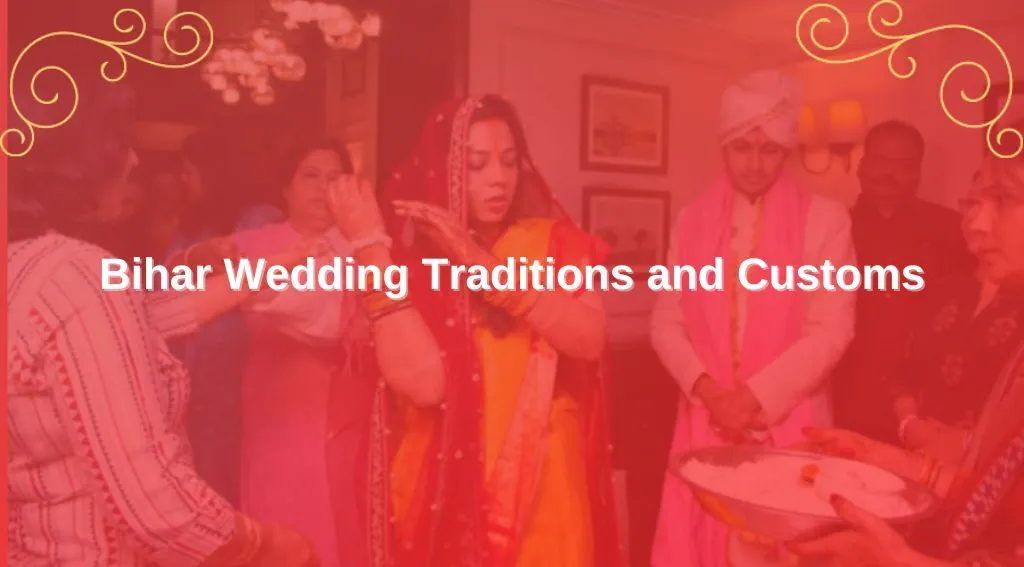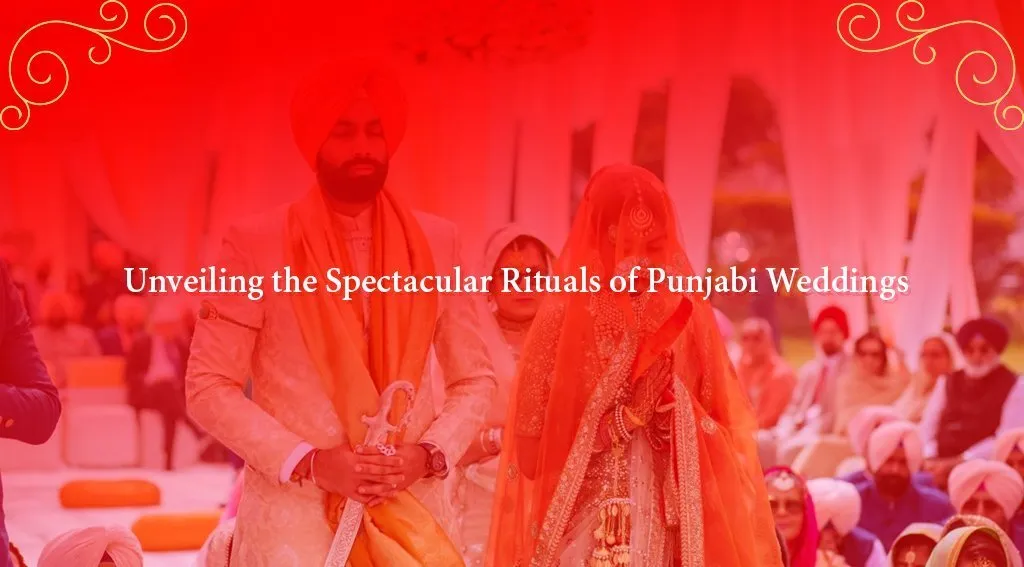Have you ever been soaked within the the vivid of colours and vitality that characterises a Bihar Wedding Traditions and Customs?
If you have, you understand that it is more than just a union of two souls; it is a celebration steeped in tradition and heritage. Let’s start on a captivating journey through Bihar’s marriage rituals, where each moment reflects the rich weaving of Indian culture.
Pre-wedding: Bihar Wedding Traditions

Satya Narayan Katha: The Journey to Blessings
The path of a Bihari culture wedding begins with the sacred passages of Satyanarayan Katha, in which prayers blend with the smell of incense. As the priest recounts stories of divine blessings, families come together in expectation of the auspicious union.
Cheka – The Activity of Engagement
Cheka begins with laughter and swapped glances as the groom’s family offers an array of gifts as a symbolic gesture of dedication. Rings exchange promises of eternal love, securing the assurance of a shared adventure.
Haldi Kutai: A a rush Of Turmeric
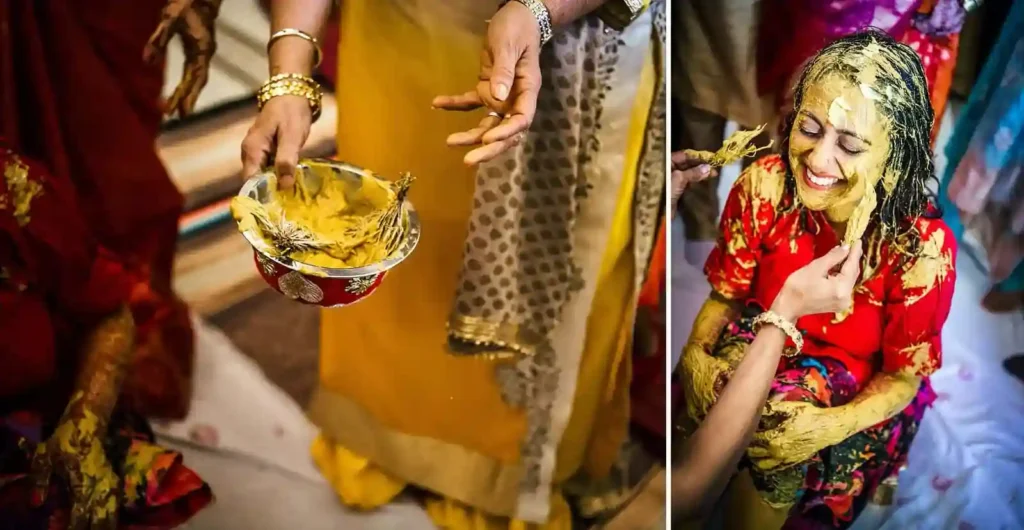
Folk songs fill the air as the bride’s body is adorned with turmeric paste, an emblem of purity and auspiciousness. It’s a time when laughter blends with tradition, creating a picture of joyful anticipation.
Also Read: Discover Tamil Wedding Traditions and Customs
Tilak: A Mark of Acceptance
In an act of acceptance, the bride’s brother bestows a tilak on the groom, a ritual rich in blessings and familial mutual respect. Gifts are given to celebrate the harmony of newly formed bonds.
Mandappachadan – Weaving Dreams
Families use bamboo as a canvas and the leaves of bananas as a paint brush to create their own holy mandap, an oasis where vows surpass the realm of the physical. Amidst whispers of expectation, the stage is set to announce an eternal promise.
Silpoha and Imli Ghutai: Accepting Tradition
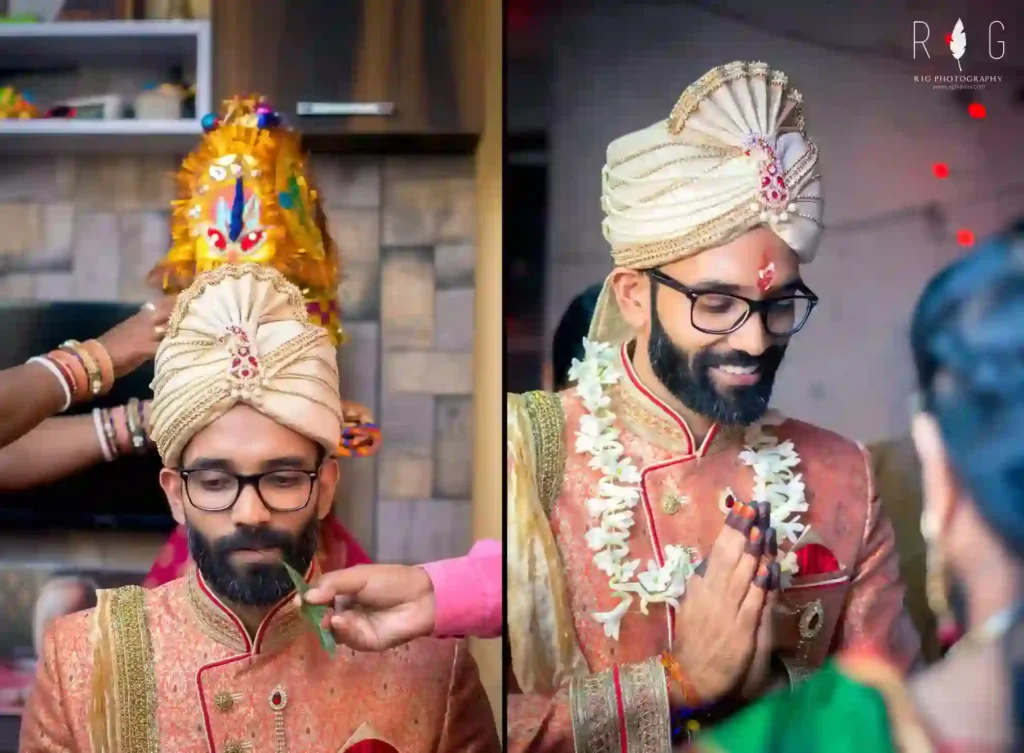
As the sun rises, the pulsating noise of rice crushing fills the air, an ancient custom handed down through generations. Imli Ghutai follows, offering solemn advice and biological blessings while warding away the evil gaze with a tender hug.
Wedding Day: Bihar Wedding Traditions and Customs
Paricchavan Ritual: Mother’s Blessing
Before the journey begins, the affection of a mother takes centre stage as she showers prayers on her son. Tilak adorns his brow, a prayer for peaceful union resonating in the fresh morning breeze.
Baraat Prasthaan: A Joyful Procession
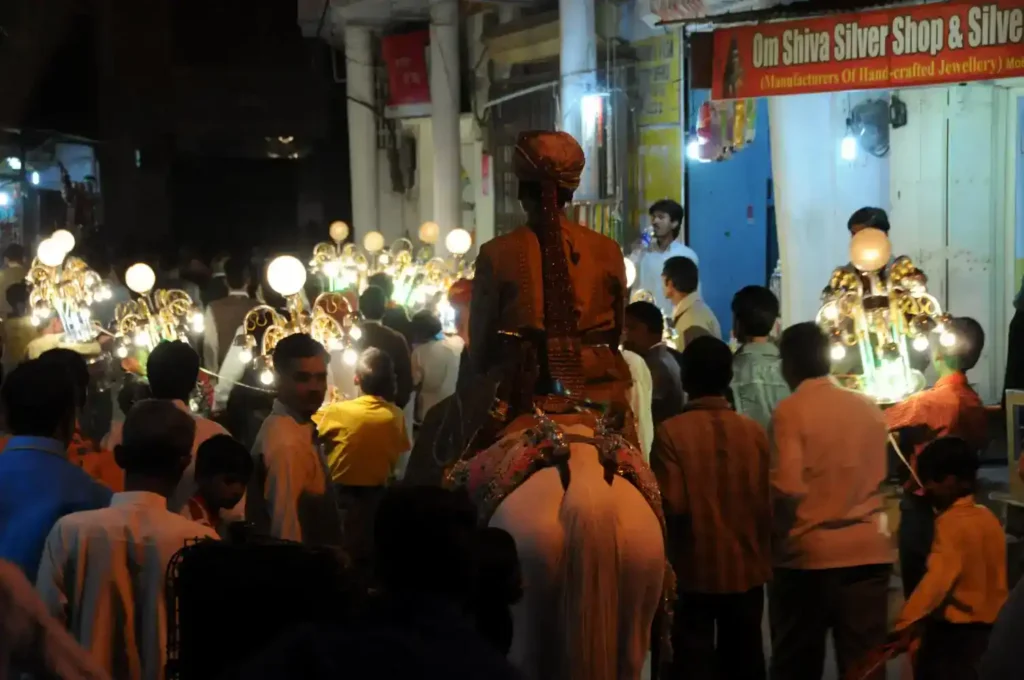
The groom sets out on his journey in a display of floral style, his chariot embellished with festive hues. The procession ushers in a new chapter, accompanied by cheers and laughter.
Also Read: Manipur Wedding Tradition and Rituals: Things to Know
Jaimala and Galsedi: Garland’s of Love
As garlands swap hands, hearts join in an arrangement of love. Galsedi comes next, a ritual involving ash and cow dung that symbolises purity and fertility and demonstrates the seasonality of life.
Kangnabandhana and Kanyadaan: The Threads of Destiny
The bride and groom’s lives are intertwined by fateful threads as they go through rituals of ornamentation and approval. Kanyadaan, a moving moment of parental a blessing seals an agreement of everlasting togetherness.
Bhaisur Nirakshan, and Pheras: Ancestral Blessings
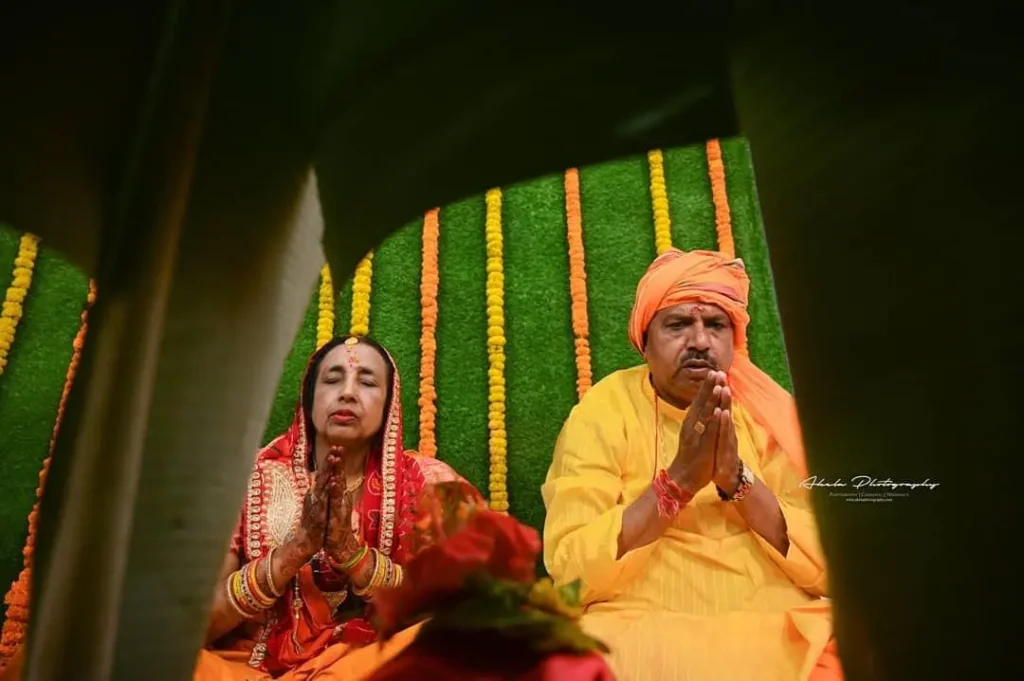
In the midst of family whispers, prayers flow in the shape of ancestor gifts and prayers. Pheras circle the holy flame, witness to vows made in eternity, as grain dances in the fires, praying to the union with plenty.
Post-wedding bliss: Bihar Wedding Traditions and Customs
Kohwar Parikshan, Salami, and Vidai: Celebrating New Beginnings
As the sun rises, the couple begins a journey of discussed dreams. Kohwar Parikshan develops, a tradition rich in anticipation and murmured blessings. After Salami there is a shower of presents and well wishes. This clears the way for the next chapter.
Swagataarti, Mooh Dikhai, and Chauthari:
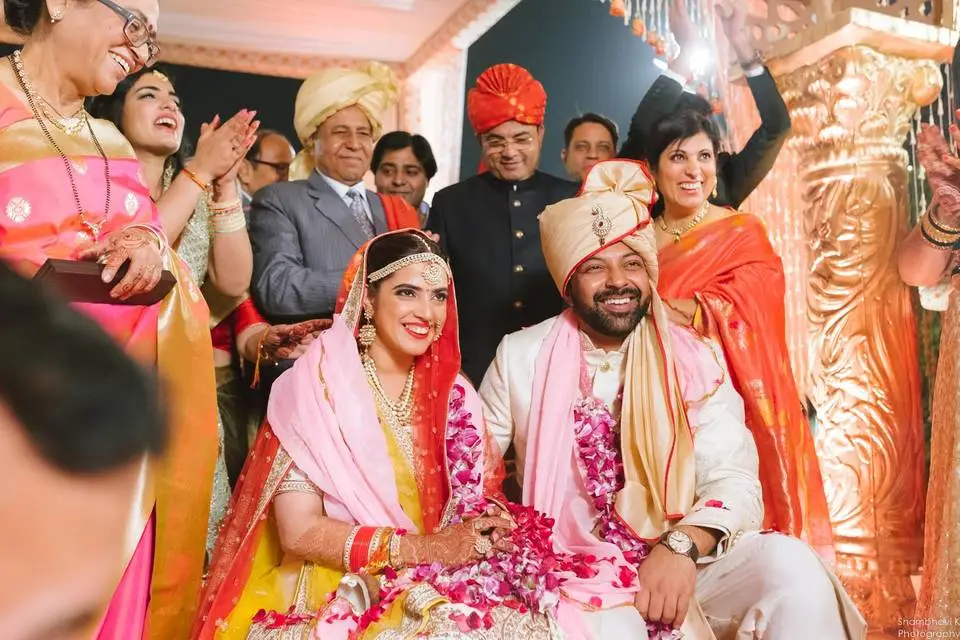
The newlyweds enter their new home surrounded by the fragrance of crop of rice and flowers, greeted by the embrace of heritage. Mooh Dikhai unfolds, a moment of parental affection and treasured gifts in which Chauthari honours divine blessings.
Chauka Chulai Ritual: A Food Symphony
As the keys change their hands, a new chapter of accountability begins. The bride, covered with gifts and happiness, accepts her role as the soul of the home, weaving culinary delights into a tapestry of tradition.
Conclusion
A Bihari wedding embodies tradition and heritage in every ritual, starting with the vibrant colours of Haldi to the profound vows of Pheras. It’s a celebration in which love and legacy merge, creating an arrangement of emotions that resonates across generations. So, the next time you see the dance of rituals at a Bihari marriage ceremony, remember that it’s more than just a ceremony; it’s a homage to the eternal spirit of romance and tradition.
FAQ
What makes Bihar weddings interesting compared to other Indian wedding conventions?
Bihar weddings are characterized by their wealthy social legacy and dynamic ceremonies that reflect the substance of conventional Indian weddings. From the expand pre-wedding ceremonies to the post-wedding customs, each angle of a Bihar wedding is soaks in convention and carries profound typical importance.
What are a few of the key pre-wedding customs in a Bihar wedding?
Pre-wedding ceremonies in Bihar weddings incorporate Satya Narayan Katha, Cheka (engagement ceremony), Haldi Kutai (turmeric ceremony), Tilak, Mandappachadan (setting up the wedding holy place), Silpoha (rice crushing custom), and Imli Ghutai (warding off the fiendish eye). These customs bring together family individuals and adored ones to favor the soon-to-be-married couple and stamp the starting of their travel.
Could you clarify the centrality of the post-wedding ceremonies in Bihar weddings?
Post-wedding ceremonies in Bihar weddings incorporate Kohwar Parikshan (checking for blood spots on the bedsheet), Salami (gift-giving ceremony), Vidai (bride’s takeoff to her new domestic), Swagataarti (inviting the love birds), Mooh Dikhai (bride’s revealing), and Chauthari (thanksgiving ceremony). These ceremonies mean the continuation of familial bonds and the starting of a modern chapter within the couple’s life.
What part do family individuals play in Bihar weddings?
Family individuals play a critical part in Bihar weddings, effectively taking an interest in different customs and ceremonies. From organizing pre-wedding occasions to performing devout ceremonies, family individuals contribute to the consistent execution of the wedding merriments. Family elders favor the couple, kin trade endowments, and guardians direct the whole handle with cherish and direction.
How do Bihar weddings mix convention with advancement?
Whereas Bihar weddings maintain age-old conventions and traditions, they too join cutting edge components to adjust to changing times. For case, conventional ceremonies like Tilak and Kanyadaan are performed nearby modern hones such as trading rings and facilitating expand gatherings. This blend of tradition and modernity reflects the evolving nature of Bihar weddings while preserving their cultural essence.

